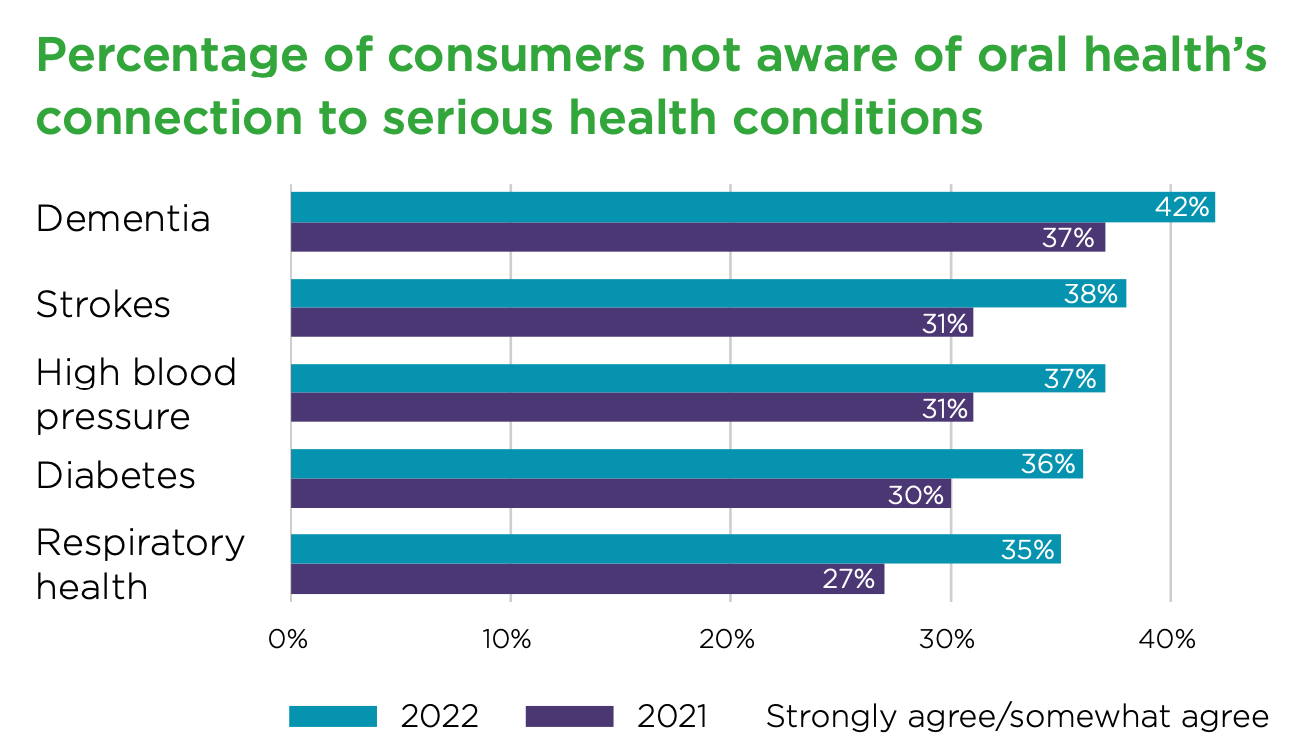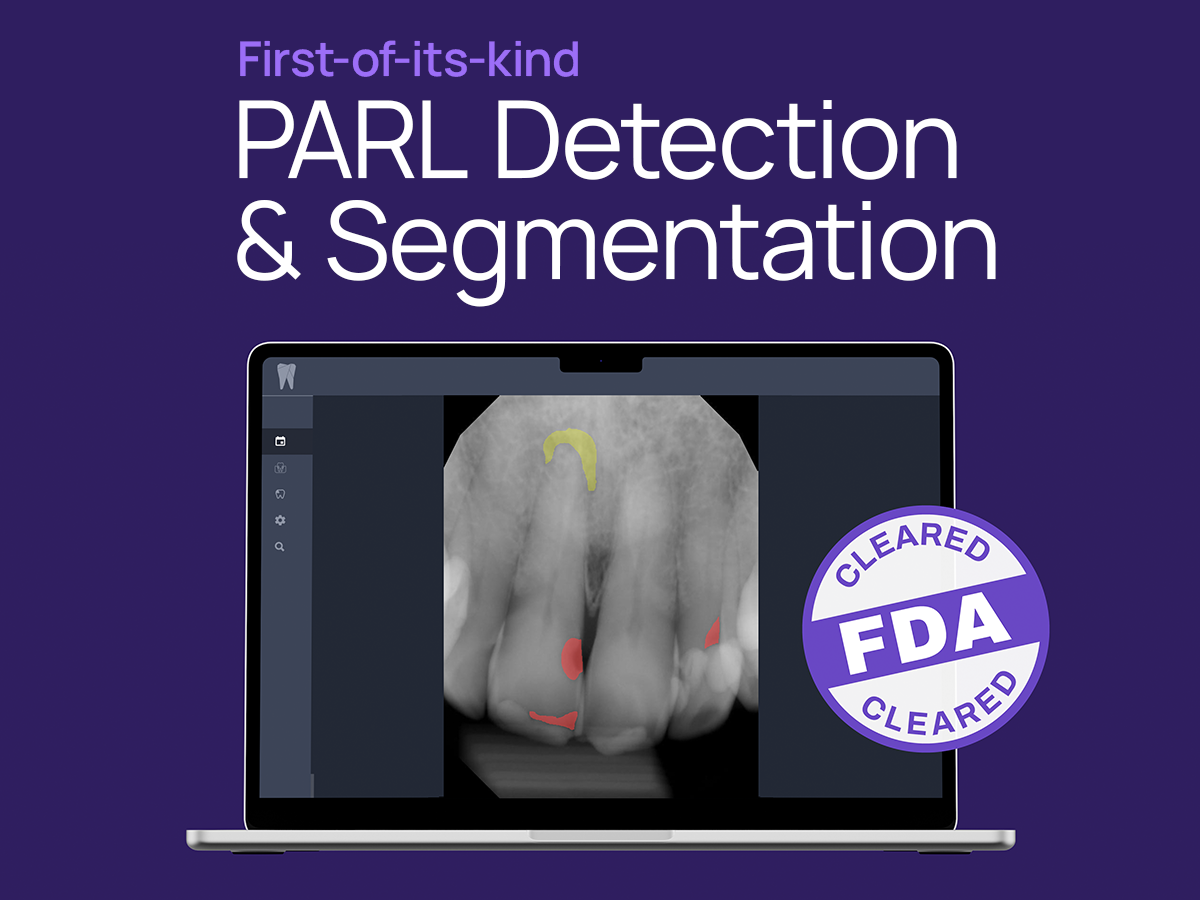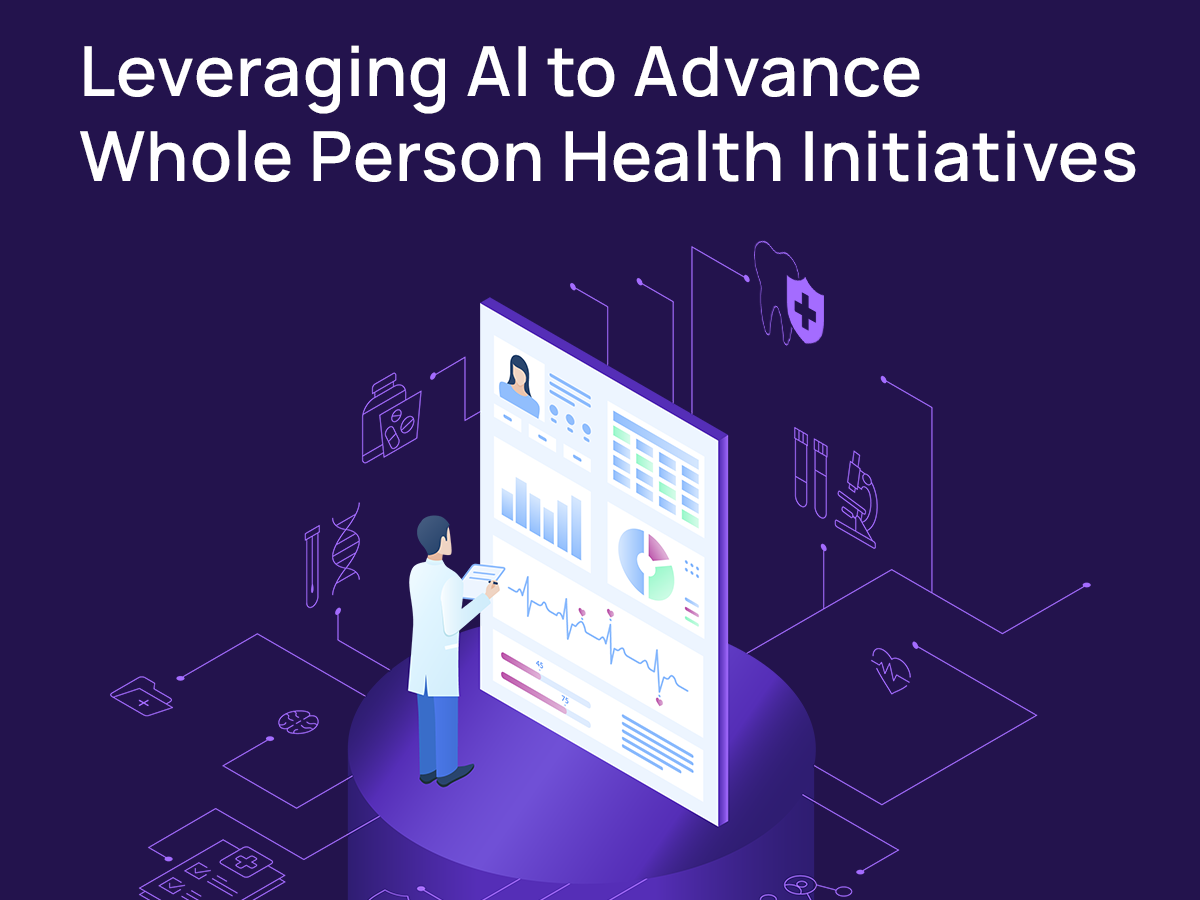Synergy.
That word implies the somewhat seamless connection between two or more things. And it has strong relevance to the relationship between oral health and overall health.
As the leader among dental artificial intelligence technology providers, we identify with that synergy. It’s a commitment to create connections.
- Between patients and their health decisions
- Between providers and their patients
- Between dental practices and their operational efficiency
- Between providers and payers
An important yet misunderstood relationship
According to data shared in a May 2022 Delta Dental report, 92 percent of adults and 96% of parents consider their oral health “to be very, if not extremely, important to overall health.” [1]
Though a strong priority, many remain unaware of the vital connection between oral health and overall health. For example, the medical-dental links to what are considered serious health issues are often misunderstood.
- 38% of strokes
- 37% of high blood pressure cases
- 36% of diabetes cases [2]
On the upside, 9 out of 10 (90%) are interested in discovering how their oral health is related to their overall health.
That’s good news for dentistry and the technology that supports it.
It’s time to make a stronger case for oral health awareness
The mindset that “a toothache is merely a toothache” isn’t valid.
This new era of health synergy demands that underlying causes be identified and treated.
But…
Also acknowledging that an oral health issue can create a domino effect in a patient’s general health.
There’s a growing awareness among adults and parents that an oral health issue (like a general health issue) has far-reaching consequences.
- A significant financial investment in care costs
- The impact of missed work and employment risks
- Loss of sleep
Among adults, parents are concerned about how oral health issues will impact their children. Though data indicates that their concern is less this year (2022) than last (2021).
- Seven out of 10 (70%) worry that oral health issues will have a negative impact on their child’s overall confidence (vs. a related 77% in 2021)).
- Of the 45% of parents with children (ages 3-17) who experienced an unplanned oral health issue – on average three days of school were missed (2021). That’s compared with 4.5 days missed (including virtual/distance learning) in 2020 and “on par” with the three missed days (for the same reasons) in 2019. [3]
No doubt, the oral health-overall health connection has an impact on quality of life and lifestyle – for adults, parents, and children.
Three game-changers for leveraging the oral-overall health connection
1- Consistent at-home oral care habits
The COVID-19 pandemic-factor drove a number of at-home trends – including oral health care. Recommended guidelines continue to dominate oral health consciousness among adults and parents.
During 2021, children and adults (on average) followed core oral health habits.
- Twice daily brushing
- Once per day flossing and use of mouthwash [4]
Oral care habits are driven by the health benefits associated with each. The prevention of tooth decay, avoiding dental issues, and the desire to maintain or improve personal oral health lead the surge.
Surveyed adults associate brushing and flossing with “cosmetic benefits” like an attractive smile or whiter teeth.
Adults also give attention to toothbrush replacement and products (beyond toothbrushes and floss) known to support their habits. These include:
- Fluoride products (49%)
- Whitening products (20%)
- Tongue scrapers (15%)
- Mouth guards and night guards (10%)
This said, one out of two parents believe there’s room for improvement in their child’s oral health habits. [5]
2- Prioritize preventive dental appointments
A majority of people surveyed visited their dentist in 2020 and 2021. Preventive care appointments were higher for children (89%) and adults (72%) in 2021.
The increase in preventive dental care aligns with the right pace and reasons for doing so.
- An average of two dental visits within 12 months
- A goal of reducing the potential for a serious dental issue (59%).
- The knowledge that oral health is connected to overall health (42%).
Demographic data points to Boomers being more likely than younger generations to “prioritize preventive visits.”
- “70% of Boomers believe preventive visits reduce the chance of serious dental issues.”
- 49% of Boomers know how important oral health is to overall health.” [6]
Across the board there are “barriers” to receiving dental care for adults, parents, and children. The impact includes preventive and reactive dental visits.
- Financial barriers
- Emotional barriers (e.g. fear of dental visits)
- Lack of dental insurance
- COVID-19
Barriers aside, adults and parents admit that they “plan to prioritize dental visits in 2022.” [7]
Availability and use of dental insurance
”Currently, more than 3 in 5 (62%) adults across the country have dental insurance. Similarly, 85% of parents report their child is covered. And nearly all adults who are currently insured recognize that their dental insurance is critical in helping them to achieve optimal oral health,…” [8]
Their reasons for insurance-confidence:
- “Allows for good oral health” (95%)
- Motivation to schedule a dental appointment at least once per year (93%)
- “Encourages better oral health habits” (92%)
- “Lead a healthy life” (88%) [9]
Adults and children with coverage were more likely to seek preventive dental care than those without coverage. Insurance plays a key role in driving better oral health care.
Barriers to dental care were also on the lesser side of the equation for those with insurance coverage. That includes preventive and reactive care factors.
It’s also common for adults with dental insurance to understand the emotional and financial benefits of being covered.
- Peace of mind during good and “uncertain” times (e.g. COVID-19 pandemic, etc)
- Less worry if/when facing a dental emergency
- Cost savings
These motivators considered, those currently without dental insurance (96 million adults) admit that cost is the key barrier. Even so, 30% believe “they will likely secure dental insurance in 2022.” And 89% of the uninsured see the value in having dental coverage. [10]
The synergy between oral health and overall health is driving opportunity for the public, patients, and the DSOs who recognize it. As AI technology innovators we are believers as well.
Check out the following links for a more in-depth perspective on AI trends and the oral-overall health connection:
Shaping the Future of the Clinical/Technical Relationship
How AI Technology Improves the Dental Patient Experience
Explore AI with a technology leader among the largest DSOs and insurance companies.
Overjet is the leader in dental AI, helping both payers and providers improve patient care. Founded by experts from MIT and Harvard School of Dental Medicine.
Overjet has assembled the largest and most seasoned team of technologists and domain experts with deep AI, dental, and insurance experience.
Learn more about Overjet or request a demo.
[1] https://www.deltadental.com/us/en/about-us/press-center/2022-press-releases/new-delta-dental-report-finds-many-are-unaware-of-connection-between-poor-oral-health-and-serious-medical-conditions.html
[2] https://www.deltadental.com/us/en/about-us/press-center/2022-press-releases/new-delta-dental-report-finds-many-are-unaware-of-connection-between-poor-oral-health-and-serious-medical-conditions.html
[3] Delta Dental-2022 State of America’s Oral Health and Wellness Report, p6.
[4] Delta Dental-2022 State of America’s Oral Health and Wellness Report, p7.
[5] Delta Dental-2022 State of America’s Oral Health and Wellness Report, p8.
[6] Delta Dental-2022 State of America’s Oral Health and Wellness Report, p9.
[7] Delta Dental-2022 State of America’s Oral Health and Wellness Report, p10.
[8] Delta Dental-2022 State of America’s Oral Health and Wellness Report, p11.
[9] Delta Dental-2022 State of America’s Oral Health and Wellness Report, p11.
[10] Delta Dental-2022 State of America’s Oral Health and Wellness Report, p12.











